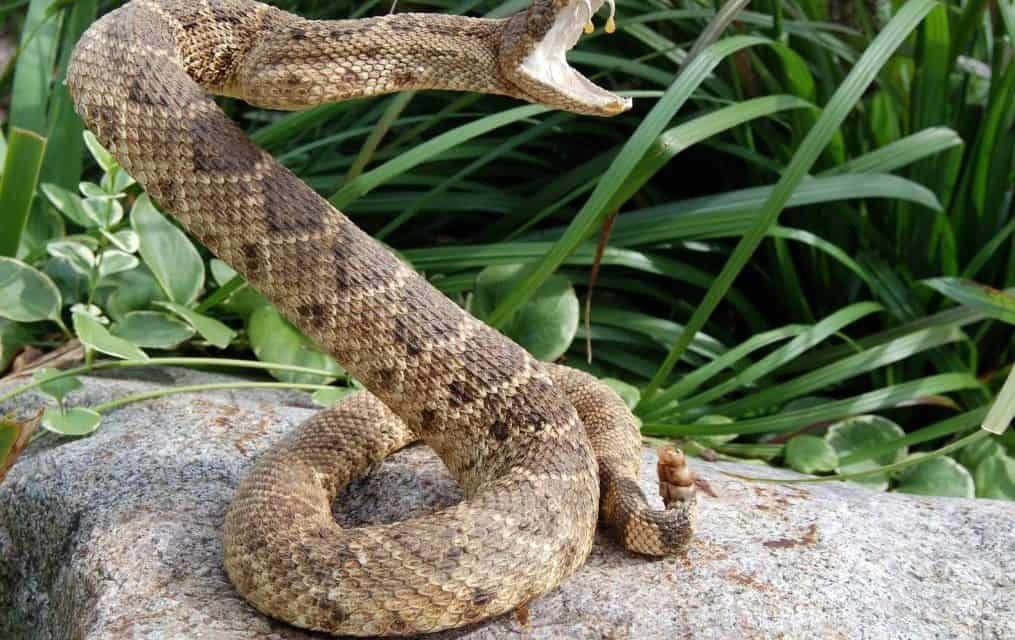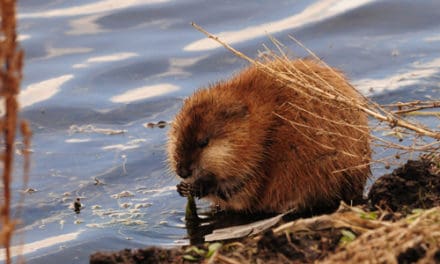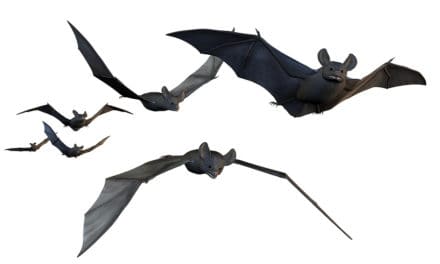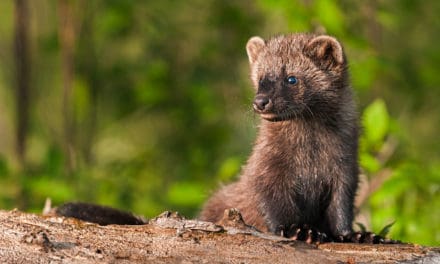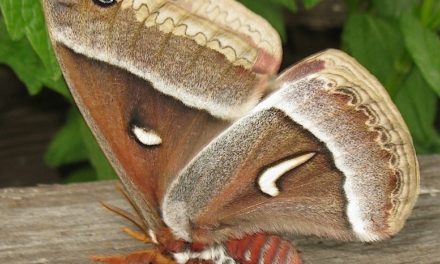By Melissa Wynn
[media-credit name=”bigstockphoto” align=”alignleft” width=”300″]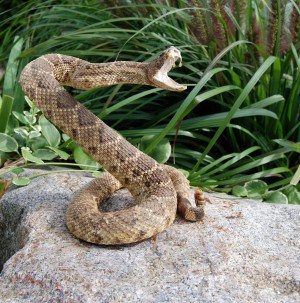 [/media-credit]Wildlife abounds in our neck of the woods but not all of our animal neighbors are warm and fuzzy. A select few are cold blooded, slither and come equipped with a deadly liquid poison known as venom. California hosts six venomous species of snakes. All six are Rattlesnakes:
[/media-credit]Wildlife abounds in our neck of the woods but not all of our animal neighbors are warm and fuzzy. A select few are cold blooded, slither and come equipped with a deadly liquid poison known as venom. California hosts six venomous species of snakes. All six are Rattlesnakes:
• Southern Pacific Rattlesnake
• Sidewinder
• Speckled Rattlesnake
• Red Diamond Rattlesnake
• Western Diamond Back
• Mojave Rattlesnake
We all know these venomous vipers make the hair on the back our neck stand on end when they earn their name by shaking the rattle at the end of their tail. Here are a few things you may not know:
• Of 8,000 cases of venom poisoning per year in all of North America, only 10-15 result in fatalities.
• In many snakes, the left lung is reduced or absent.
• Some snakes lay eggs and others give birth to live young, such as the Rattlesnake.
• Venom is a prey immobilization adaptation in snakes, defense is secondary.
• Venom is 90% protein.
• Venom is composed of neurotoxins (attack nervous system) and/or hemotoxins (attack circulatory system)
• Rattlesnakes can meter the amount of venom injected when they strike.
• Rattlesnakes gain a new section to their rattle each time they shed their skin.
Many people fear snakes because of their creepy appearance and forget their importance in the natural world. Most are harmless creatures that play a vital role in their ecosystems as highly skilled predators of rodents.
Common sense is the best protection against Rattlesnakes when wandering in the nature. Watch where you place your hands, where you place your feet, and where you sit. If you find a snake, LEAVE IT ALONE! Give it plenty of space and safely enjoy the great outdoors.
Facts Courtesy of sbsc.wr.usgs.gov

